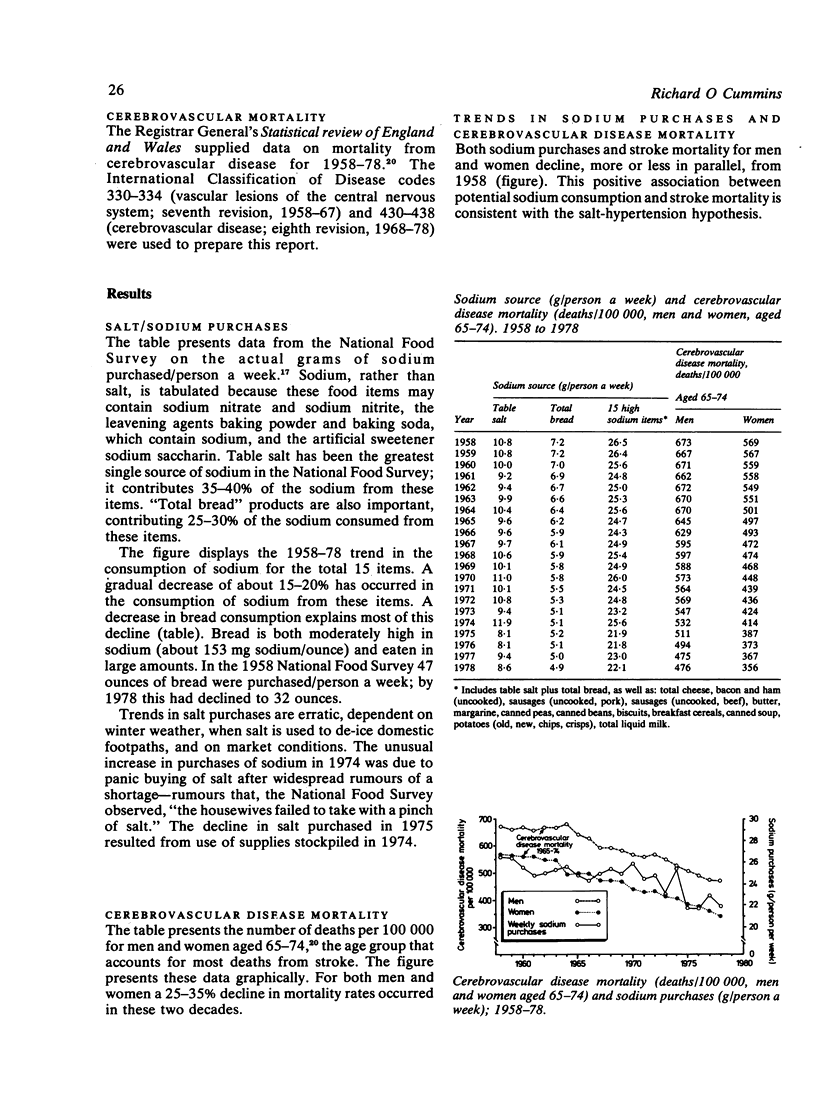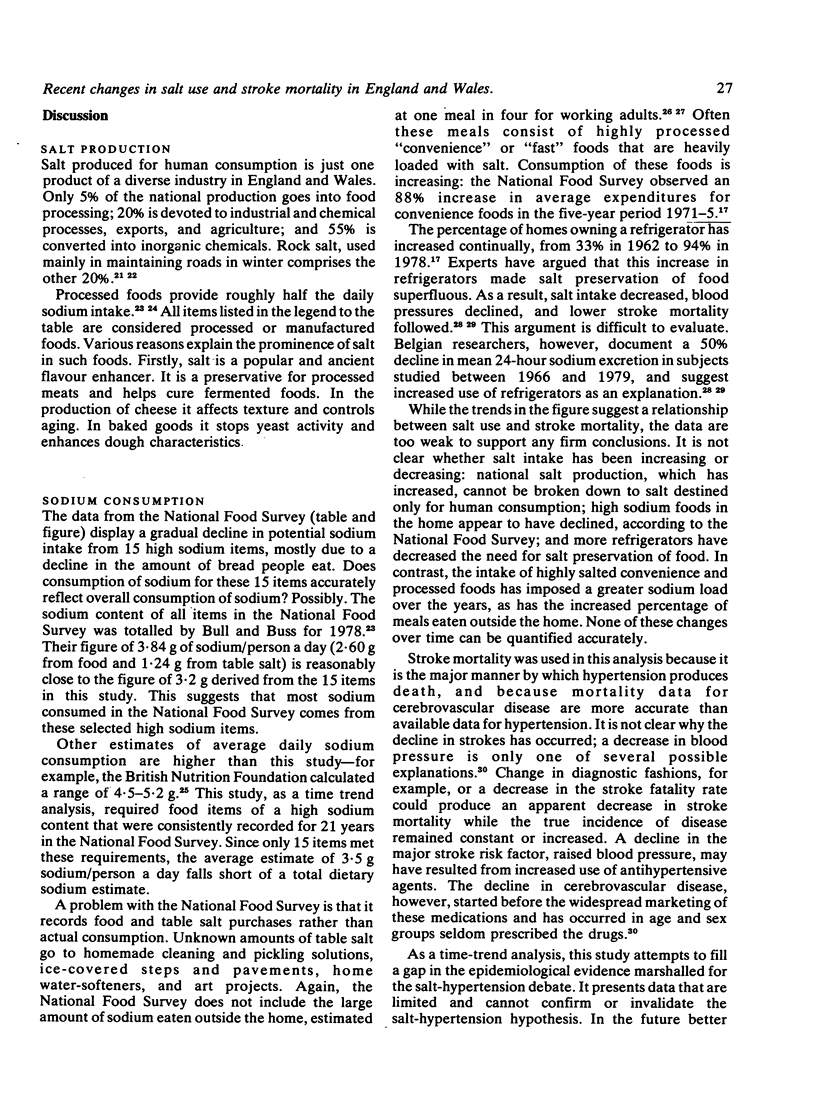Abstract
This analysis attempts to fill the gap in the epidemiological evidence about the relation between dietary salt and hypertension. Changes in the purchase of salt in England and Wales are compared with changes in mortality from cerebrovascular disease (1958-78). Stroke mortality, a major sequel of hypertension, has declined in this period. Consumer purchases of salt have decreased also, as suggested by the National Food Survey. While these trends are consistent with the salt-hypertension hypothesis, the picture is confused by an increase in meals eaten outside the home, by the consumption of more processed food, and by a higher prevalence of refrigerators. Other events, such as medical treatment of hypertension or changes in the case fatality rate, could have contributed to the decline in stroke mortality. This secular trend analysis, using available data, does not clarify the salt-hypertension debate.
Full text
PDF



Selected References
These references are in PubMed. This may not be the complete list of references from this article.
- Beevers D. G., Hawthorne V. M., Padfield P. L. Salt and blood pressure in Scotland. Br Med J. 1980 Sep 6;281(6241):641–642. doi: 10.1136/bmj.281.6241.641. [DOI] [PMC free article] [PubMed] [Google Scholar]
- Buss D. H., Lindsay D. G. Reorganization of the UK total diet study for monitoring minor constituents of food. Food Cosmet Toxicol. 1978 Dec;16(6):597–600. doi: 10.1016/s0015-6264(78)80229-6. [DOI] [PubMed] [Google Scholar]
- DAHL L. K., SCHACKOW E. EFFECTS OF CHRONIC EXCESS SALT INGESTION: EXPERIMENTAL HYPERTENSION IN THE RAT. Can Med Assoc J. 1964 Jan 25;90:155–160. [PMC free article] [PubMed] [Google Scholar]
- Dale N. E. Sodium and potassium content of some Australian foods and beverages. Med J Aust. 1979 Oct 6;2(7):354–355. [PubMed] [Google Scholar]
- Garay R. P., Meyer P. A new test showing abnormal net Na+ and K+ fluxes in erythrocytes of essential hypertensive patients. Lancet. 1979 Feb 17;1(8112):349–353. doi: 10.1016/s0140-6736(79)92891-5. [DOI] [PubMed] [Google Scholar]
- Hosking M. Salt and hypertension. Med J Aust. 1979 Oct 6;2(7):351–352. doi: 10.5694/j.1326-5377.1979.tb104151.x. [DOI] [PubMed] [Google Scholar]
- Joossens J. V., Kesteloot H., Amery A. Salt intake and mortality from stroke. N Engl J Med. 1979 Jun 14;300(24):1396–1396. doi: 10.1056/NEJM197906143002414. [DOI] [PubMed] [Google Scholar]
- Miall W. E. Follow-up Study of Arterial Pressure in the Population of a Welsh Mining Valley. Br Med J. 1959 Dec 5;2(5161):1204–1210. doi: 10.1136/bmj.2.5161.1204. [DOI] [PMC free article] [PubMed] [Google Scholar]
- Morgan T., Gillies A. Effect of reduction in salt intake on hypertension. Am Heart J. 1979 Jun;97(6):811–812. doi: 10.1016/0002-8703(79)90019-x. [DOI] [PubMed] [Google Scholar]
- Page L. B., Damon A., Moellering R. C., Jr Antecedents of cardiovascular disease in six Solomon Islands societies. Circulation. 1974 Jun;49(6):1132–1146. doi: 10.1161/01.cir.49.6.1132. [DOI] [PubMed] [Google Scholar]
- Poston L., Sewell R. B., Wilkinson S. P., Richardson P. J., Williams R., Clarkson E. M., MacGregor G. A., de Wardener H. E. Evidence for a circulating sodium transport inhibitor in essential hypertension. Br Med J (Clin Res Ed) 1981 Mar 14;282(6267):847–849. doi: 10.1136/bmj.282.6267.847. [DOI] [PMC free article] [PubMed] [Google Scholar]
- Swales J. D. Dietary salt and hypertension. Lancet. 1980 May 31;1(8179):1177–1179. doi: 10.1016/s0140-6736(80)91631-1. [DOI] [PubMed] [Google Scholar]


